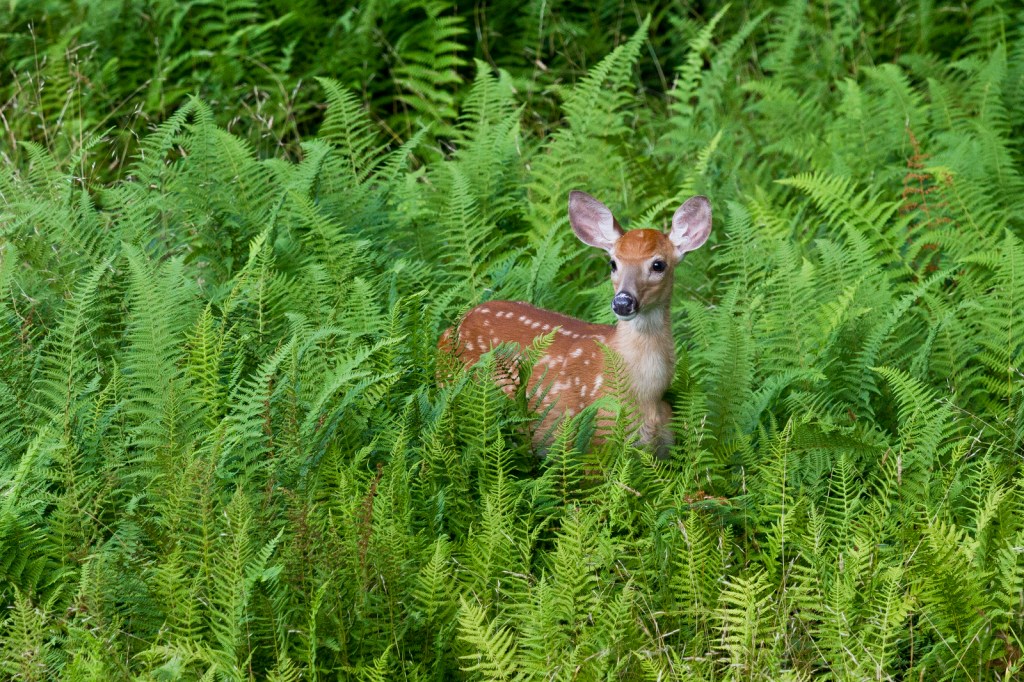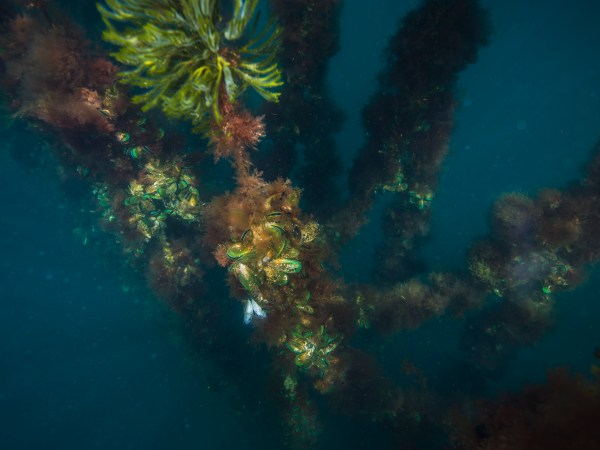Have you met the new neighbors?
They just moved in across the street. Right away they took to wandering up and down the block, helping themselves to whatever they could find to eat: that arbor vitae in your front yard, for example. Or the snow peas that were just starting to creep up their trellises. The sunflower seeds once contained by your now-empty bird feeder. They also increase the likelihood that you, your family and pets will contract Lyme disease.
Our communities have a problem—one that is trotting on four hooves from woods and fields right into our neighborhoods at an astonishing rate: white-tailed deer.
For thousands of communities across our nation, the deer problem hits close to home. But could we also look to our own communities to develop home-grown solutions?
The Problem is Exploding
Nationwide, white-tailed deer populations have been on the rise for a century, reaching an all-time high of more than 30 million in the last decade—that’s three times more deer than there are hunters in the United States today.
And that overabundance of deer is spurring an explosion in conflicts between people and deer. For example:
- More than one million deer-vehicle collisions annually including on average 200 fatalities and $4 billion in damages.
- The number of confirmed cases of Lyme disease has doubled and Rocky Mountain Spotted Fever has quadrupled in the last 20 years.
- Protecting young tree seedlings from deer browsing can triple planting costs.
Communities need relief—particularly in places where the symptoms of elevated deer populations are felt most severely: our cities, suburbs, and exurbs.
One Thousand Points of Light: Community-Based Deer Management
Communities throughout white-tail range are taking matters into their own hands. Make no mistake; the authority to manage the deer herd within each state ultimately rests with state agencies. But across the nation, local governments of all sizes are partnering with state agencies to develop approaches that meet local needs.
Why? Because citizens are demanding it — across the nation from New Jersey to Minnesota, from Iowa to Maryland:
- Union County, New Jersey is among the longest-standing examples of community-driven deer management. Residents’ concerns over deer-car collisions and damage to property and landscapes came to a head in the 1990s, with demonstrations. Established in 1995, an annual managed hunt by volunteer marksmen from a local sportsmen’s association is the centerpiece of Union County’s deer management program.
- In Duluth, Minnesota, concerned citizens petitioned the city council to address the impacts of nuisance deer. In contrast to Union County’s firearms program, Duluth instituted a city-wide archery hunt. The all-volunteer program is managed by the Arrowhead Bow Hunters Alliance at no cost to the city. The program has proven popular with residents and hunters alike, includes both public and private lands, and has averaged 500 to 600 deer in the last ten years.
- For some communities, paid sharpshooters are part of the solution. (Many biologists consider sharpshooters the most effective approach, but it is also the most expensive.) Iowa City, Iowa initiated a deer management program that includes sharpshooters to reduce deer numbers to 25 deer per square mile. Similarly, Howard County, Maryland developed a comprehensive deer management plan that outlines a suite of options ranging from defensive driving and deer-resistant plantings on one end of the spectrum to managed hunts and sharpshooters on the other.
- Although non-lethal methods such as relocation and sterilization are often cited in community deer management plans, time and again the research points to these practices as prohibitively expensive for most communities and also ineffective. For example, in Ithaca, New York, a recent effort succeeded in sterilizing 95% of does on Cornell University lands over a five-year period. Despite this success, the local deer population remained stable, as did negative impacts. It is worth noting that in some states, Texas for instance, sterilization of deer is illegal.
Although each community has its own flavor, successful projects share common elements—they are grounded in a thoughtful process. Scientists at Cornell University’s Human Dimensions Research Unit have dubbed the sum of these parts “Community Based Deer Management.” Dr. Daniel Decker, PhD student Emily Pomeranz, and their Cornell colleagues have studied how the deer issue evolves within communities, a cycle that begins with identifying a concern (e.g., deer-car collisions). Concerned citizens and local leaders partner with agency and extension experts in a process that educates and engages stakeholders at every step and offering clear, frequent communication along the way to keep the broader community informed.
Community-based Deer Management offers hope in the form of home-grown remedies for day-to-day conflict. Of course, none of these examples is without strife—deer management, regardless of scale, is fraught with controversy. A diverse group comes together, they deliberate, and ultimately a course of action is selected that is guaranteed not to please everyone. It’s not about “Kumbaya.” It’s about coexistence, not just with deer, but with each other.
From Points of Light to Floodlight
But think about it. There are, give or take, 39,000 local governments in the United States, including municipalities, townships, and counties. Do we really expect all these places to come up with a community process and a long-term deer management plan? Or that somehow if they all did so our nation-wide deer problem would be solved?
No.
There’s no getting around the fact that the root causes of deer overabundance operate at much larger scales than an individual community. If statewide deer numbers were in balance with their natural habitats, much of the deer conflict in our communities could be avoided.
Unfortunately, finding the right balance at larger scales is a long way off. Most state wildlife agencies continue to manage for high deer populations, catering largely to recreational hunters. Public safety, human health, forest productivity, and agriculture are at best an afterthought. This is an exorbitant model.
Preparing for the NextGen in Deer Management
As we develop the NextGen model for deer management, we can look to communities taking on today’s challenges of too many deer.
A NextGen deer solution means:
- Supporting local governments with emerging deer problems by offering information and resources and connecting them with other communities that have made progress resolving the issue;
- Refining the community-based framework and making it widely available to communities, educators, and agencies; and
- Collaborating with state wildlife agencies on reimagining the current deer management model to incorporate a greater diversity of perspectives and balance the spectrum of values.
If you have concerns about deer in your own community, the first step is to find out whether a deer management program already exists for your location.
Talk with your neighbors to find out whether they share your concerns. Raise the issue with your elected officials and local leaders. Provide examples of how other communities are addressing the problem, such as the ones mentioned in this post. You never know. Your community could help shine the light on a NextGen for deer management.




Do you know of any albino deer studies ?
Hi Kris,
We do cover albino deer (and other white deer, not all are albinos) in another feature: https://blog.nature.org/2016/02/03/white-deer-understanding-a-common-animal-of-uncommon-color/
I thought that this article was very interesting and informational.